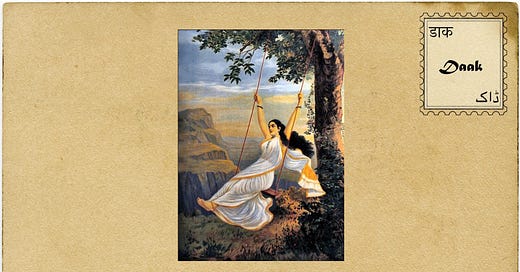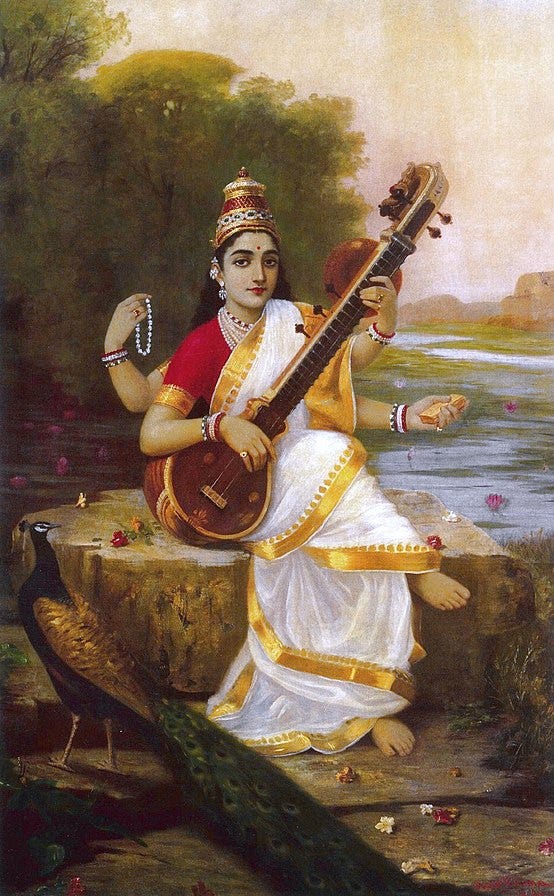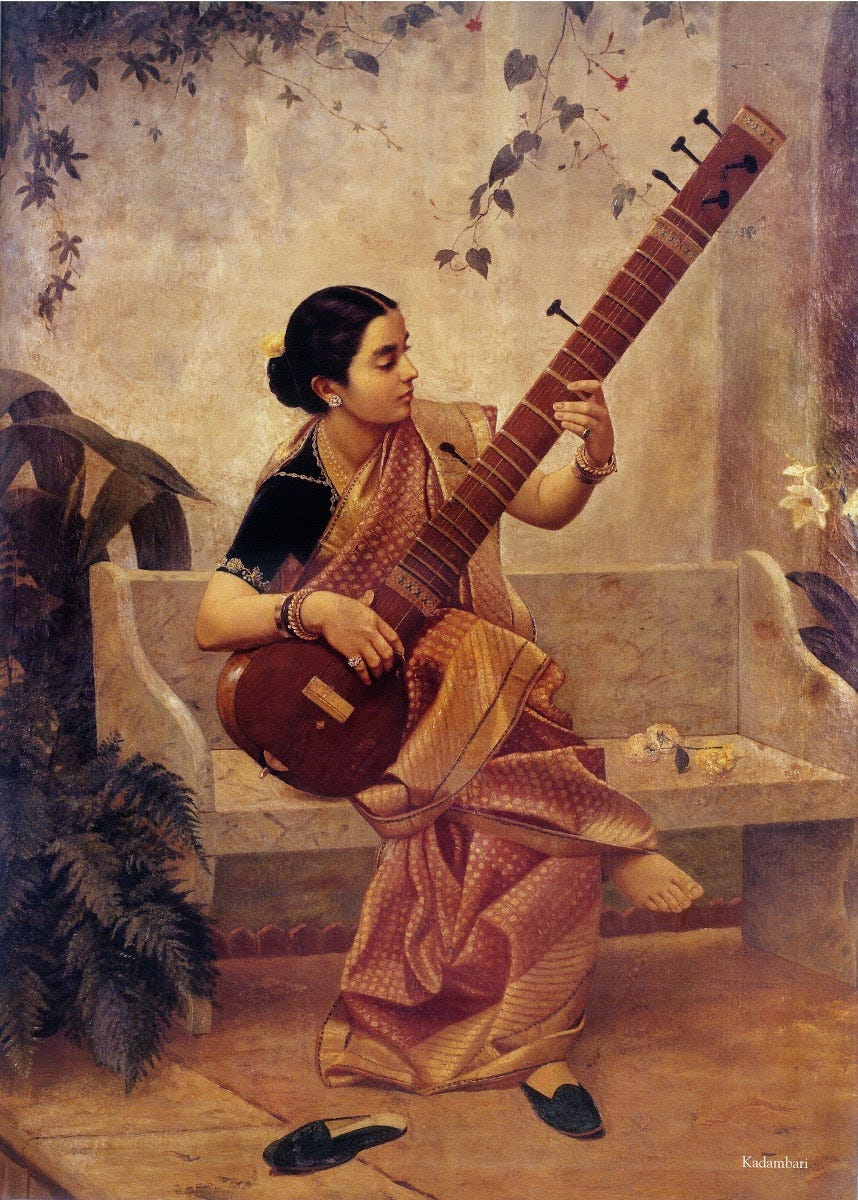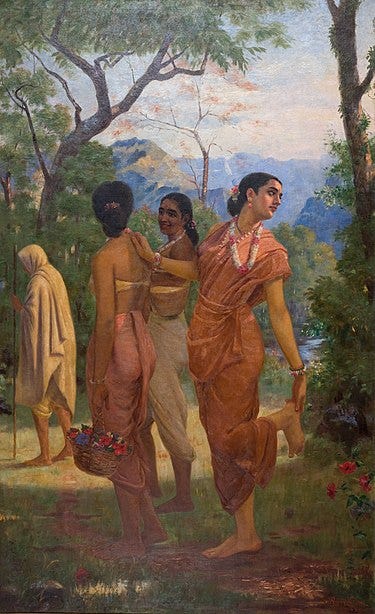Democratising Art: Raja Ravi Varma's Paintings and Prints
A common post-new year ritual of many small businesses in the subcontinent was the giving away of free (but branded) wall or desk calendars to their customers. Often, these calendars bore images of Gods and Goddesses which, unbeknownst to us, became our first introduction to Raja Ravi Varma. These ubiquitous paintings were neither signed nor credited, but they came to form the dominant image of Hindu Gods and Goddesses in the public psyche - through his rich detailing of costume and jewellery, Varma humanised divine beings and forever imprinted them in our imagination.
Arguably the most well-known painter to emerge from India, Raja Ravi Varma’s (1848 - 1906) influence on the region’s culture is undeniable; from art and adverstising to cinema and textile, many aspects of culture bear impressions of his work. An ambitious and prolific artist, Varma made an astonishing number of paintings ― some estimates suggest 2000 ― in his lifetime.
In addition to his art, Varma’s most important contribution was the establishment of a printing press. In 1894, he set up a lithographic printing press with imported German machines. This press mass produced oleographs (prints designed to look like oil paintings), match-box and textile labels, postcards and advertisements. This innovation took Varma’s, and subsequently other artists’ paintings, from the stronghold of royalty and upper-caste elite into the homes of millions. With this democratisation of art, Varma enabled ordinary people to own and appreciate art like never before. Especially powerful were his paintings of Gods and Goddesses, and scenes from Hindu mythology, which could now be accessed by anyone.
Despite his widespread fame and influence, however, Varma’s art did not escape criticism. His “calendar art” which gained mass popularity was often called kitschy and his sensual depictions of women which challenged traditional gender norms were labeled vulgar. Despite these accusations, Varma’s art has endured and continued to shape religious imagery and our cultural landscape.
We are thrilled to share our own humble tribute to Raja Ravi Varma ― a set of coasters with some of his most iconic depictions of women. You can find this and other gifts inspired by the art and literature of South Asia at the link below.






